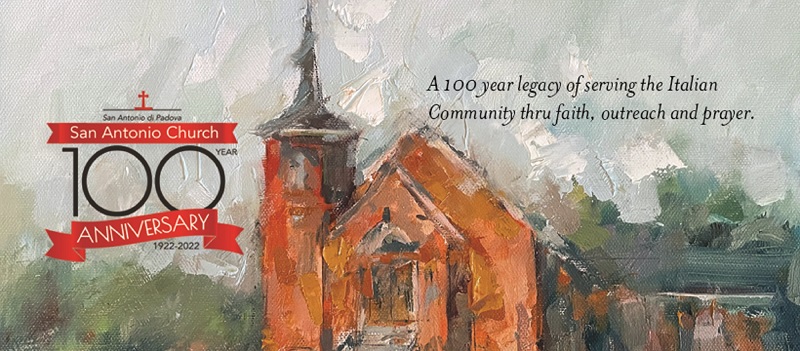We would like to thank everyone who has continued to contribute to the ongoing expenses of San Antonio Church by mailing in their weekly envelopes or by contributing electronically utilizing WeShare . The buttons at the bottom of this post allow you to make online donations directly to the listed account for San Antonio Church.
Weekly Bulletin August 1, 2021
by Terrie Evans
On this 1st Sunday of August, San Antonio Church will welcome all the extended family members from the Cupito, Marckesano, Palmieri and Panaro Families for the Mass and Reception to showcase the history of our church. Many of the members of these families were some of the first settlers who started their families in the Little Italy Section of Lick Run in South Fairmount. These Patriarch’s and Matriarch’s who arrived in Cincinnati were part of the 10 million people who arrived in the U.S. from 1855 to 1890. Before Ellis Island; there was Castle Garden Immigration Center, built in 1808 as a circular sandstone fort on a small artificial island offshore. Castle Garden at one time was used as a Fort to protect New York Harbor, a place where Native Americans would fish and where the first Dutch Settlers built a stone wall with cannons to guard what was then the city of New Amsterdam. It was considered the first American Immigration Station so, most likely; some of the families from South Fairmount may have been processed there. It was operated by the state of New York until April 18, 1890 when the U.S. Government took over the processing of immigrants due to unnecessary deaths, and workers being involved with cheating and stealing from the new arrivals.
With Castle Garden closed, the reception center was moved to the U.S. Barge Office located on the Eastern edge of the Battery Waterfront. The Federal Government then took over of immigration control at Ellis Island which opened on January 2, 1892. Sadly, many of the immigrant passenger records were destroyed in a fire that consumed some of the structures at Ellis Island on June 15, 1897. During this time many Italians were making their transatlantic journey which left Naples by way of Gibraltar to New York or other ports such as Boston, Baltimore, Philadelphia or New Orleans. The Captain of each arriving ship would prepare a handwritten Customs Passenger List and then file it with the collector of customs at the port of arrival. Many times, those who were transported in steerage were not even listed, as steerage passenger lists were rare.
Those who had a destination of New York, Buffalo or the Great Lakes may have gone on to Western Pennsylvania, Northern Ohio, Indiana, Illinois, Wisconsin, Michigan or Minnesota. Those who arrived in Boston would sometimes go on to the New England States and those arriving at Baltimore or Philadelphia at times went to Pittsburgh and then traveled by boat to cities along the Ohio River. If families landed in New Orleans many went on by boat up the Mississippi to places such as Missouri or Illinois. Their journey was a long uncomfortable trip especially for those in steerage that sometimes would accommodate 700 to 800 passengers in only 7 different sleeping apartments. There were many deaths and illnesses with some arrivals sent back to their home country for various reasons. In each history of our families, we cannot forget the risks they endured to come here for a better life for their family. They had to have a sponsor, a job and a place to live. More than 100 million Americans today can trace their family history to this early period of immigration. Remember, they came here for all of us.
